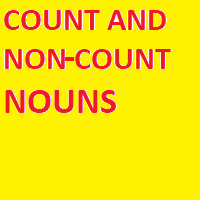Exercise: Classifying Nouns as Count (C) or Non-Count (N)
Examine the underlined nouns in the sentences below and classify them as Count (C) or Non-Count (N).
Understood, let’s provide the explanations in English for the Count (C) and Non-Count (N) noun examples previously mentioned:
1- A gentle breeze made the afternoon pleasant. (N)
“Breeze” is considered a non-count noun because it refers to a general quality or type of wind, not quantifiable in discrete units.
2- The apples in this orchard are exceptionally sweet. (C)
“Apples” are count nouns because they can be counted as individual items or units.
3- Her knowledge of history is impressive. (N)
“Knowledge” is a non-count noun because it signifies an abstract concept of understanding that cannot be divided into countable units.
4- They added two new desks to the office last week. (C)
“Desks” are count nouns as they refer to individual, countable pieces of furniture.
5- Drinking water is essential for health. (N)
“Water” is a non-count noun because it is measured in volume or mass, not in countable units.
6- The dogs in the neighborhood are very friendly. (C)
“Dogs” are count nouns since they can be counted as separate entities.
7- He has a remarkable collection of art from various cultures. (N)
“Art” is a non-count noun as it represents a collective concept of creative work, not measured in individual pieces.
8- That book on the shelf is my favorite. (C)
“Book” is a count noun because it refers to a tangible item that can be counted.
9- Information is the key to making informed decisions. (N)
“Information” is a non-count noun because it encompasses an aggregate amount of data, not divided into countable units.
10- Many restaurants now offer vegan options. (C)
“Restaurants” are count nouns as they are individual places that can be counted.
11- The furniture in this room was handcrafted. (N)
“Furniture” is a non-count noun because it refers to a collective term for items of household equipment, typically not counted individually when speaking in general terms.
12- She planted several flowers in her garden yesterday. (C)
“Flowers” are count nouns since they refer to individual, countable items that can be planted and counted in a garden.
13- His enthusiasm for the project is contagious. (N)
“Enthusiasm” is a non-count noun because it represents a feeling or state of intense eagerness, which cannot be quantified in discrete units.
14- All the students are required to attend the seminar. (C)
“Students” are count nouns as they refer to individual people, who can be counted.
15- Rice is a staple food in many countries. (N)
“Rice” is generally considered a non-count noun when referring to it as a substance or in bulk, because it’s not practical to count individual grains.
16- The gallery showcases paintings from the Renaissance period. (C)
“Paintings” are count nouns because they refer to individual works of art that can be counted.
|
